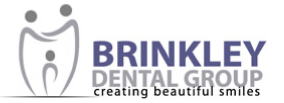One thing that has long fascinated me is the study in contrasts between photographs taken in the 1800’s and those taken today – and I’m not just talking about the “selfie” or “duckface” phase many of our younger generation seem to be indulging in! No, rather I am referring to the fact that historically, folks just didn’t seem to smile for photographs whereas today, we are pretty much always told to “Smile” or “Say Cheese!” As a Dentist I was curious about this evolution in photography and wondered if it had anything to do with the state of oral health care then vs. now. If you’re curious too, read on.
Dental care has come a long way since the first picture was taken in 1826. The truth is, back then people were brushing their teeth with tooth creams and powders made from all kinds of abrasive materials like crushed seashells. Flavourings like oil of cinnamon or clove were added and occasionally you might even have had a chemical thrown in to the mix – things like ammonia or chlorophyll! It stands to reason then, that many people had bad teeth. Even wealthier folks often had poor oral hygiene and when the blacksmith also served as the local “Dentist” not many people would seek treatment for a problem until it was simply time to pull the tooth out altogether. Side note….no wonder us Dentists sometimes have a bad rap!
After a little bit of research we uncovered the real reasons most people didn’t smile back in the good old days and it actually had very little to do with the state of one’s teeth. Here are the real reasons most folks frowned:
Long Exposure Times
Because cameras in the early days required lengthy exposure times to capture a shot, it was just plain difficult for someone to hold a smile for a long period of time. Subjects would have to hold a pose for a while in order for the picture to not turn out blurry so not smiling was just plain easier.
The Influence of History
Another common theory is that photography was considered an art form and took some of its earliest influences from the art world and formal portraits such as what you might see on a castle wall. Typically there was not a good deal of smiling going on in those ancient portraits so smiles weren’t part of early photography either. This doesn’t really answer my other pressing question: Was Mona Lisa smiling?
Dental Care
While it wasn’t the only reason, poor oral hygiene also played a role in the lack of smiles seen in those early years. Bad teeth and occasionally even few or no teeth, was not uncommon. Why smile when you had nothing to show off!
Sensibilities
Quite frankly times were different back then and words like “staid” and “reserved” or “stoic” were more often used when describing personality. Photographs from cameras were considered elegant and were also expensive so people weren’t going to cheapen the moment with a smile that in the truly Victorian days might even have been thought of as lewd, unseemly or as a sign of drunkenness.
So there you have it. In case you ever wondered about smiles and frowns and the evolution of the smile when it comes to cameras, now you know. The general sentiment is that as photography progressed and became more affordable, it led to the “democratization” of photography making it accessible to everyone. Accessibility led to widespread use of the cameras in a variety of social settings, including things like parties where of course, people were usually smiling! Now – if only someone could explain the “duckface” to me…….Thanks for reading and remember: “don’t forget to be a BFF with your mouth and Brush that SMILE!”




